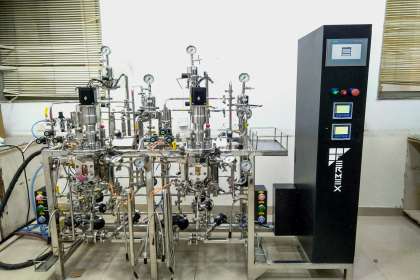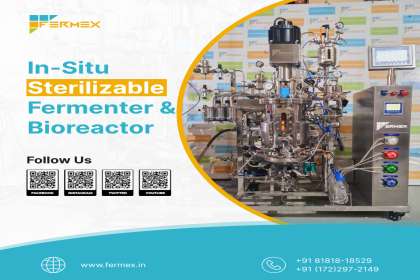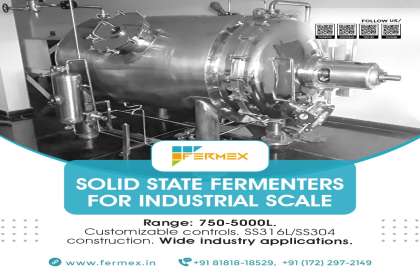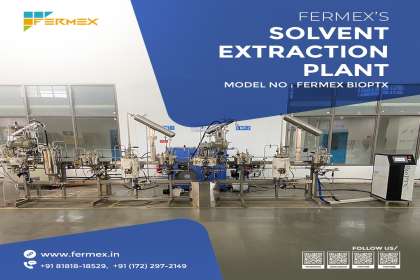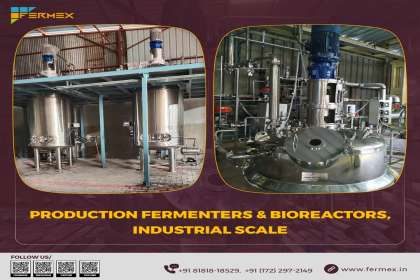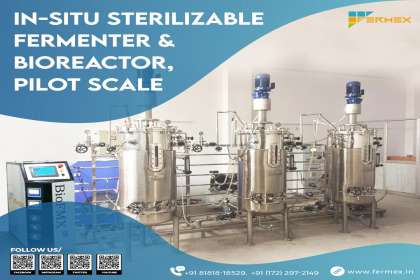Role and Benefits of Fermenters in Vaccine Production

Use of Fermenter in Vaccine Production
Fermenters play a crucial role in the production of vaccines, particularly those that are produced using cell cultures or microbial fermentation processes. A fermenter, also known as a bioreactor, is a controlled environment where microorganisms, such as bacteria, yeast, or mammalian cells, can grow and multiply under optimal conditions.
- Throughout the entire vaccine production process, fermenters provide a controlled and sterile environment for the growth of microorganisms or cells, enabling the efficient and consistent production of vaccines. They allow for scalability, ensuring that large quantities of vaccines can be produced to meet global demand while maintaining the necessary quality and efficacy.
Key stages involved in the process of making Vaccine Production
The process of vaccine production involves several key stages, which may vary depending on the type of vaccine being developed. Here are the general stages involved in vaccine production:
1. Research and Development: This initial stage focuses on identifying and selecting the target antigen for the vaccine. Scientists study the pathogen or disease-causing agent to understand its structure, replication mechanisms, and potential antigens that can trigger an immune response. Extensive laboratory research and preclinical testing are conducted to identify the most promising candidates.
2. Preclinical Testing: Before moving to human trials, preclinical testing is conducted using animal models to evaluate the safety and efficacy of the vaccine candidate. This stage involves testing the vaccine’s immune response, determining optimal dosages, and assessing any potential side effects.
3. Clinical Trials: Clinical trials are conducted in three phases to evaluate the safety, immunogenicity, and efficacy of the vaccine candidate in humans.
- Phase 1: Small-scale trials involving a limited number of healthy volunteers to assess safety, dosage, and immune response.
- Phase 2: Expanded trials conducted on hundreds of participants to further evaluate safety, dosage, and immunogenicity, as well as to assess any side effects or adverse reactions.
- Phase 3: Large-scale trials involving thousands to tens of thousands of individuals to confirm the vaccine’s safety, efficacy, and ability to protect against the target disease. These trials involve comparing the vaccine group with a placebo or control group.
4. Regulatory Approval: After the successful completion of clinical trials, the vaccine manufacturer submits a comprehensive dossier of data to regulatory authorities for approval. Regulatory agencies review the data to assess the safety, efficacy, and manufacturing processes of the vaccine.
5. Production: Once regulatory approval is obtained; vaccine production begins on a larger scale. This stage involves manufacturing the vaccine in compliance with Good Manufacturing Practices (GMP) to ensure quality, consistency, and sterility. Fermenters, as discussed earlier, may be used for large-scale production if the vaccine is produced using cell cultures or microbial fermentation.
6. Quality Control: Throughout the production process, rigorous quality control measures are implemented to monitor and test the vaccine’s characteristics, purity, potency, and safety. This includes testing raw materials, conducting in-process checks, and performing final product testing.
8. Post-Market Surveillance: After the vaccine is introduced into the market, post-market surveillance is conducted to monitor its safety and effectiveness in real-world conditions. Adverse events are monitored, and any necessary adjustments or improvements to the vaccine or its administration are implemented.
7. Distribution and Administration: Once the vaccines have undergone quality control and have been packaged and labelled, they are distributed to healthcare facilities, pharmacies, and vaccination centres for administration to the general population. Distribution logistics, cold chain storage, and proper handling are critical to ensure the vaccine’s integrity and efficacy.


Fermex Solutions LLP manufactures fermenters that can be used for these productions.
- Glass Autoclavable Fermenter (Lab scale)
- In situ Solid State Fermenter (Industrial scale)
- In situ Solid State Fermenter (Pilot scale)
- In situ Submerged Fermenter (Industrial scale)
- In situ Submerged Fermenter (Pilot scale)
Benefits of Fermenters in the Production of Vaccine
Fermenters, also known as bioreactors, offer several key benefits in the production of vaccines. Here are some of the advantages of using fermenters in vaccine production:
1. Scalability: Fermenters allow for the scalable production of vaccines. They can be designed and operated at various sizes, ranging from small laboratory-scale fermenters to large industrial-scale systems. This scalability enables the production of vaccines in large quantities to meet global demand.
2. Controlled Environment: Fermenters provide a controlled environment for cell cultures or microbial fermentation. Parameters such as temperature, pH, dissolved oxygen levels, agitation, and nutrient supply can be precisely regulated to create optimal conditions for the growth and reproduction of the microorganisms or cells used in vaccine production. This control helps to maintain consistency and reproducibility throughout the production process.
3. Increased Yield: By optimizing the growth conditions within fermenters, it is possible to achieve higher yields of vaccine antigens. Fine-tuning parameters such as nutrient availability, oxygen supply, and growth medium composition can enhance the productivity of the microorganisms or cells, resulting in higher antigen concentrations and improved vaccine production efficiency.
4. Sterility: Fermenters provide a sterile environment essential for the production of vaccines. The design of fermenters includes features such as sterilization-in-place (SIP) systems and aseptic connections to ensure that the culture medium and equipment remain free from contaminants during the production process. Maintaining sterility is crucial to prevent unwanted microbial growth or contamination that could compromise the safety and efficacy of the vaccine.
5. Process Monitoring and Control: Fermenters are equipped with sensors and monitoring systems that allow real-time monitoring of critical process parameters. This enables operators to closely monitor and control the growth of microorganisms or cells, ensuring that the production process remains on track and meets the desired specifications. Any deviations or abnormalities can be quickly identified and addressed, helping to maintain the quality and consistency of the vaccine.
6. Efficiency and Cost-effectiveness: The use of fermenters in vaccine production can increase efficiency and cost-effectiveness. With the ability to produce vaccines in large quantities and optimize growth conditions, fermenters contribute to higher yields and reduced production time. This efficiency can result in cost savings, making vaccines more accessible and affordable.









